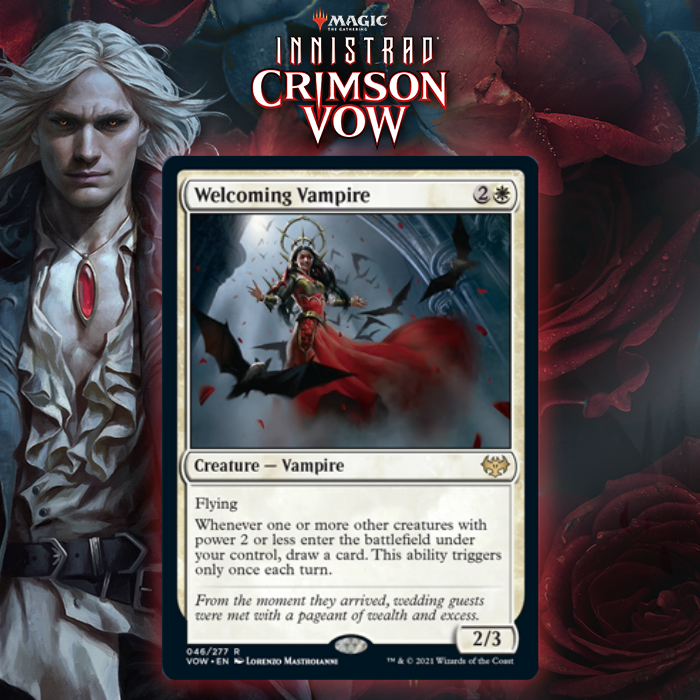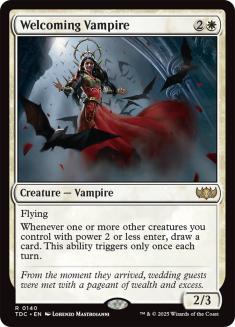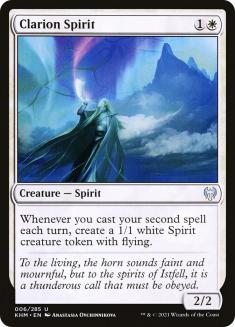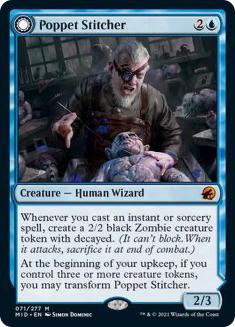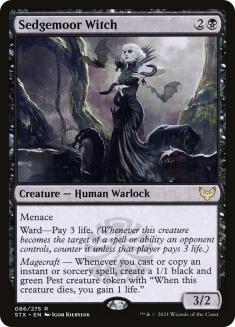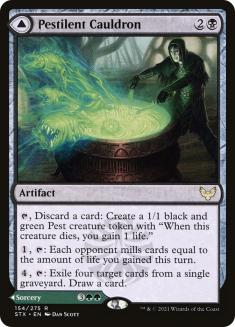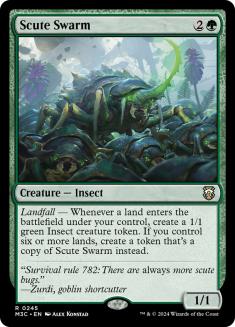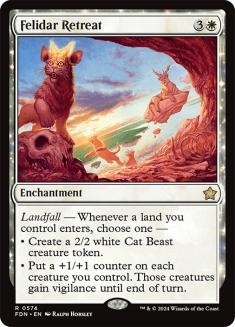Let me tell you a little bit about Michael Majors.

Even though he excelled at tight technical play, Majors was also incredible at identifying the potential value in cards that others quickly overlooked. He parlayed that ability into an unsurpassed deckbuilding prowess, often utilizing interactions no one else saw, no matter how much they looked. The man’s skillset was diverse, although he did have one weakness.
When Majors was hired by Wizards of the Coast (WotC), I inherited his Magic collection. Mostly, it consisted of cards he’d speculated on and was then too apathetic to sell. Some of them, like the stack of Aetherworks Marvels, could have been worth a decent amount had he timed it right.
Others…
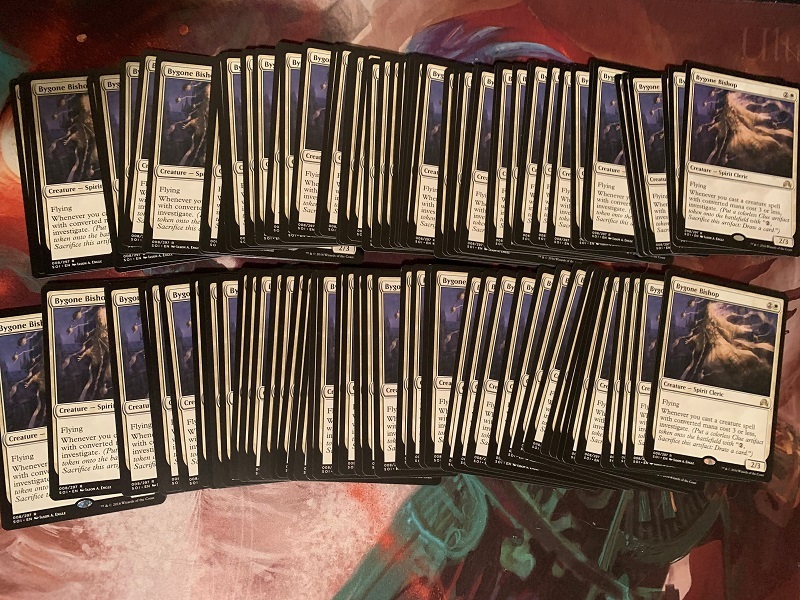
Well, they can’t all be winners.
Even though Bygone Bishop had its moments in Constructed, it never became a staple and therefore never increased in value. When its ability to win attrition wars became relevant and the surrounding pieces cooperated, Bygone Bishop was invaluable.
Creatures (29)
- 4 Knight of the White Orchid
- 3 Kytheon, Hero of Akros
- 2 Consul's Lieutenant
- 4 Reflector Mage
- 2 Bygone Bishop
- 2 Archangel Avacyn
- 4 Thraben Inspector
- 4 Thalia's Lieutenant
- 4 Town Gossipmonger
Lands (22)
- 13 Plains
- 1 Island
- 4 Prairie Stream
- 4 Port Town
Spells (9)

In this deck, I used Bygone Bishop mostly as part of my sideboard plan. I’d bring in cards Ojutai’s Command, Dragonlord Ojutai, and more Bygone Bishops and take out the aggressive cards like Town Gossipmonger. That gave me the ability to beat decks reliant on sweepers or those prepared to beat aggro mirrors.
Of course, the truly great Bygone Bishop deck wouldn’t appear until much later.
Creatures (24)
- 4 Bygone Bishop
- 4 Thraben Inspector
- 4 Hanweir Militia Captain
- 4 Spell Queller
- 4 Selfless Spirit
- 4 Cloudblazer
Lands (25)
Spells (11)

Unfortunately, my 7-1 Standard deck came with a mediocre Modern one. This Oketra’s Monument deck is one of the best decks I’ve ever had the pleasure of playing in a tournament and it wouldn’t have been possible without Bygone Bishop.
So, is Welcoming Vampire the next coming of Bygone Bishop, or is it even better?
Bygone Bishop and Welcoming Vampire aren’t the same card, although they can be used in similar strategies. Even though Bygone Bishop triggered from more cards, it also cost mana to get the card advantage. Depending on the context of the format, Welcoming Vampire is the stronger card because of the immediate return.
You’re capped on your ability to draw cards, but how many extra cards do you actually need? How many times did you trigger Bygone Bishop per turn on average? If you’re able to trigger Welcoming Vampire each turn, you’ll have your own personal Howling Mine. It shouldn’t be difficult to win if that’s the case.
Welcoming Vampire only triggers off creatures with two power or less. It doesn’t seem like it should be such a huge drawback, but it kind of is. Standard has a plethora of creatures you want to play that incidentally have three power. The saving grace is that you can afford to put some bigger creatures in your deck, as long as they’re cheap and you’re able to cast a smaller creature on the same turn.
Token makers work just fine, although there aren’t many great ones at the moment. I’m particularly interested in ones that work at instant speed.
If these didn’t work at instant speed, they wouldn’t be worth considering. Of these, Pestilent Cauldron is the worst since it requires discarding a card, which keeps you on card parity.
Alongside cards like Evolving Wilds, Field of Ruin, or Murasa Rootgrazer, the landfall token makers can work as well.
Creatures (24)
- 4 Murasa Rootgrazer
- 4 Tangled Florahedron
- 3 Yasharn, Implacable Earth
- 2 Scute Swarm
- 4 Elite Spellbinder
- 4 Prosperous Innkeeper
- 3 Welcoming Vampire
Planeswalkers (2)
Lands (22)
Spells (12)

Selesnya Festival was a fringe deck at the beginning of last season until Izzet Epiphany showed up. I’m interested in giving it a second look for three reasons. First of all, Innistrad: Crimson Vow mostly accentuates creature decks, which this deck loves to play against. Second, Welcoming Vampire gives the deck another source of card advantage that it desperately needed. Finally, a highly disruptive sideboard plan, including Thalia, Guardian of Thraben, might be enough to stand up to Izzet Epiphany.
I’m unsure if this is the best way to build this deck, but I like the look of it.
Creatures (19)
Planeswalkers (4)
Lands (23)
Spells (14)

Orzhov attracted me because of the interaction between Welcoming Vampire and Jadar, Ghoulcaller of Nephalia. Outside of mana acceleration, there’s no way to cast Welcoming Vampire and trigger it on Turn 3 besides Jadar that I could find.
There’s no shortage of ways to build this deck. Elite Spellbinder would help with the Izzet Epiphany matchup. You could also use some of the new exploit creatures like Mindleech Ghoul or Fell Stinger, especially with the token generators.
Kaya, Geist Hunter strikes me as something on the weaker end of playability, but it’s worth trying in a deck that can generate tokens. Rite of Oblivion is interesting for the same reason. Most of your creatures are expendable or create expendable permanents, making Rite of Oblivion one of the best removal spells possible in this deck.
Creatures (22)
- 3 Luminarch Aspirant
- 4 Clarion Spirit
- 4 Elite Spellbinder
- 2 Brutal Cathar
- 4 Spectral Adversary
- 2 Overcharged Amalgam
- 3 Welcoming Vampire
Lands (23)
Spells (15)

This one is obviously inspired by Noriyuki Mori’s deck.
It seems like we can’t get away from three-power creatures, at least to some degree. Elite Spellbinder is too good not to play in many of these decks and Overcharged Amalgam feels mostly the same way.
Syncopate is a huge pickup for blue decks. With only Negate and Disdainful Stroke as two-mana options, decks had to lean on Jwari Disruption in the early-game. It was passable, but Syncopate scales better in the late-game.
Don’t forget that Alrund’s Epiphany (or Esika’s Chariot) will trigger Welcoming Vampire as well!
Creatures (13)
Lands (21)
Spells (26)

Is Welcoming Vampire the secondary engine that Monk Class needed in order to shine? They certainly work well together by giving you the ability to play Welcoming Vampire and another creature in the same turn earlier than usual. Running twelve creatures is light for Welcoming Vampire, but if either token maker sticks, that’s all you need. That gives you more room for relevant interaction.
I’d say that Hullbreaker Horror is a nice addition, but it’s far more important for other decks. Horror’s role is mostly as a tool for breaking control mirrors and that might not apply here. It’s very possible that cheap counterspells and card drawing are stronger. That said, Hullbreaker Horror is probably game over if it hits the battlefield against Izzet Epiphany, at least with enough instant-speed spells.
Creatures (26)
- 3 Tangled Florahedron
- 4 Magda, Brazen Outlaw
- 4 Clarion Spirit
- 4 Jaspera Sentinel
- 4 Elite Spellbinder
- 4 Brutal Cathar
- 3 Welcoming Vampire
Lands (22)
Spells (12)

Initially, I was interested in splashing Alrund’s Epiphany in a Jaspera Sentinel deck. Sadly, there were very few blue cards worth playing. Naya is always a solid option and Welcoming Vampire is a quality addition. Most of the Naya deck will trigger Welcoming Vampire and you have Jaspera Sentinel and Magda, Brazen Outlaw providing mana acceleration. One of the small things I love about Welcoming Vampire is to turn a late Jaspera Sentinel or Tangled Florahedron into something substantial.
Welcoming Vampire is also the perfect card to pair with Ranger Class. Level 3 should be powerful, but it’s way too easy to hit a pocket of noncreatures. Having any way to manipulate the top of your deck makes it difficult for Ranger Class to miss.
The sideboard has massive amounts of disruption for Izzet and a slew of different spot removal spells. We have many options for both and you don’t need anything else in this format.
Naturally, I also looked at including Welcoming Vampire into a typical Rakdos Vampires shell. Oddly, Welcoming Vampire doesn’t necessarily work with Vampire Socialite. You can play around it by casting your first creature before attacking, but it’s awkward. There’s also Edgar, Charmed Groom, which is very much worth the inclusion, yet puts many creatures out of range of triggering Welcoming Vampire as well. Thankfully, Vampires has a few different engines to work with, so it doesn’t necessarily need Welcoming Vampire.
I also looked at Boros Vampires, but there’s no payoff to play strictly Vampires in Boros. That lead to me ignoring the Vampire typeline, except the vast majority of great Boros cards have three power. There are similar issues with Mono-White Aggro. In order to facilitate Welcoming Vampire, the deck would have to become significantly less aggressive and play weaker cards in general. Plus, the engine isn’t necessary for its plan of pure aggression.
The plan was never to play Welcoming Vampire in everything. However, if Mono-White Aggro❄ needs to adopt a way to win attrition battles, it has that option. When a card like Welcoming Vampire is involved, you usually need to stretch into a second color for interaction. You won’t be able to survive longer games against most decks without it.
Overall, Welcoming Vampire is a great addition to the format. There were several instances last season where I would have loved to have a similar card. Standard might not be in the best place for Welcoming Vampire at the moment, but that could change in an instant. When it does, you’ll be as happy as I am to have a powerful midrange card advantage tool like Welcoming Vampire.

